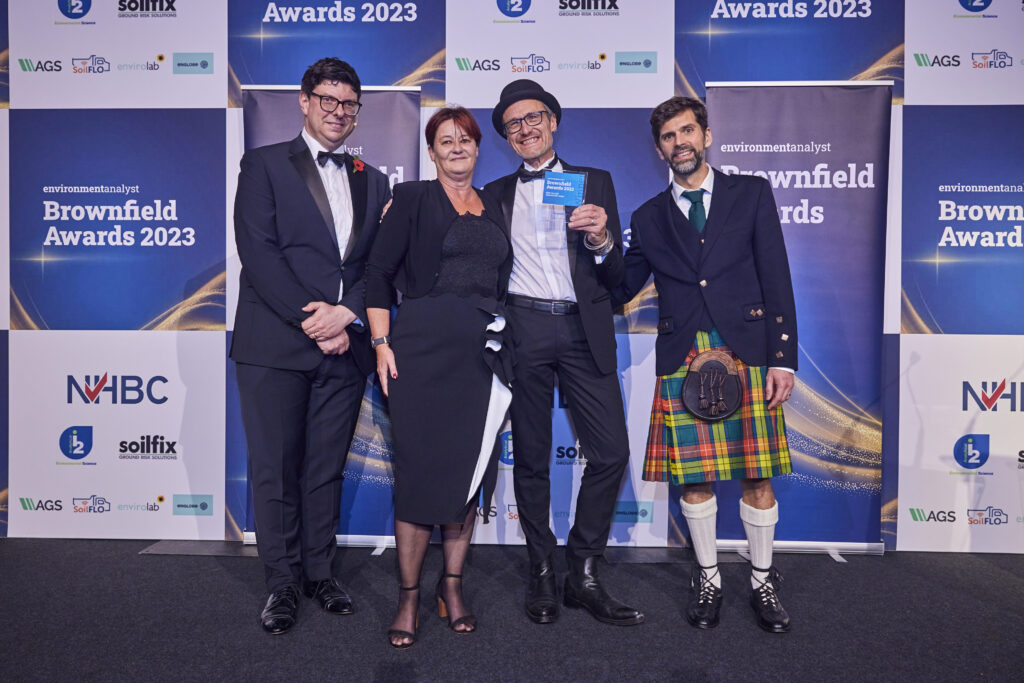We were really pleased and proud to be asked to present at this year’s SoBRA (Society of Brownfield Risk Assessment) Christmas Conference.
Simon Burr, our London Land Quality Partner, presented a case study of a recent Part 2A assessment undertaken in Ross-on-Wye which involved vapour intrusion from chlorinated solvent contamination. The site was a former dry cleaners and solvents used in the industry had made their way into the underlying groundwater which was then migrating off-site beneath an existing residential estate. The council alerted the site owners, Persimmon Homes, who then employed us to assess the situation.
CampbellReith worked with Persimmon Homes and the council to agree the form of assessment which comprised boreholes, vapour wells, both on-site and across the neighbouring residential estate. CampbellReith also undertook sampling within a select number of the houses. This included the use of monitoring tubes that are left in the properties and collected and replaced on a regular basis. We also drilled a number of holes into the floor slabs of the houses to fit vapour pins through which we could obtain vapour samples from beneath the floor slabs.
This required a significant amount of thought to be given to the residents and so in advance of the works, CampbellReith helped prepare information leaflets and then held exhibition hall meetings so we could explain the situation and our proposed works in person. We then visited all the houses on the estate to talk to those residents who hadn’t attended and to talk to those we had met to follow up on any queries they had. This allowed us to address any concerns they had regarding the contaminants, some of which are carcinogenic, and the potential impact on house prices. By way of reassurance, it was made very clear at the start that Persimmon would pay and carry out any remedial actions if a risk was identified, and if, an immediate risk was identified then the residents would be given free temporary accommodation until the issue was resolved.
The results were assessed as they were received over a five-month period and the concentrations of the main contaminant of concern (percholoroethene – PCE) were more than 50 times lower than the threshold concentration, which itself is indicative of low toxicological risk. As such, at the end of the project we were able to conclude that there was no significant risk to the residents, and this was agreed by the council and UKHSA (UK Health Security Agency). The residents were informed of the good news and the vapour pins carefully removed, decommissioned, and made good.
The project presented a number of challenges, principally because this type of work is quite rare in the UK, particularly on this scale and some of the techniques and solutions developed by us, and the specialists brought in for the project, were used for the first time. We are now in the process of writing up the project in a scientific paper for publication.
The presentation follows our win for the project at the Brownfield Awards 2023.

Please contact Simon Burr if you wish to know more about this project or if you have a site where you think we may be able to assist.